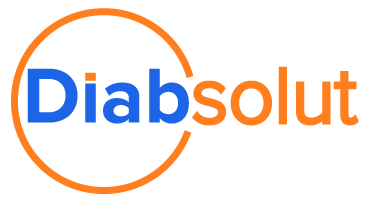It’s Time for Asset-Centric Field Service Management
Authors: Daniel Brabec (ServiceMax)
 The technology we use to manage our individual needs has a long history of converging in the name of simplicity and convenience of use. Whatever email provider you use—open the email app or browser tab and you’ll more than likely see it’s been integrated with a number of other services that provider offers.
The technology we use to manage our individual needs has a long history of converging in the name of simplicity and convenience of use. Whatever email provider you use—open the email app or browser tab and you’ll more than likely see it’s been integrated with a number of other services that provider offers.
This is a trend we’re seeing a big push for in field service, particularly when it comes to closing gaps between field service management (FSM) and asset management. ServiceMax’s asset-centric field service management solution, Asset 360 for Salesforce, is a great example of a product that is closing the gap—but how exactly does this type of solution benefit a field service organization?
Three Keys to Operational Success
People, process, and technology need to be aligned for any field service organization to operate efficiently. When you have an asset-based field service organization using multiple platforms for different areas of operations, it becomes more difficult to align people, processes, and technology. A single asset-centric field service management platform is better equipped to align and support these three key factors of organizational health.
- People: user-adoption and support
- Process: strategy and delivery
- Technology: performance and sustainability
Industry Examples
When we say an asset-based field service organization that moves toward a single platform has more connected operations and becomes more streamlined—what does this look like in the field?
- For Energy it translates to things like:
- Easier capture of asset data for real-time serial number reconciliation.
- Faster, simpler, and more accurate task completion for technicians—with fewer errors and instant updates for the back office.
- For High-Tech it means things such as:
- More accurate preventive and proactive service when it comes to entitlements and SLAs.
- The right parts in the right place at the right time, for both repairs in the field or depot.
Measurements for a Successful Transition to Asset-Centric Field Service Management
It helps to have targeted areas to measure your own organization’s success when combining FSM and asset management, even if benefits can be seen across the board. Determining metrics will provide a baseline to accurately track progress.
The four areas below are common areas of improvement post-transition and are a great place to start:
- Visibility for Benchmarking Against Industry Peers:
Establishing where you are relative to others will give you a sense of the areas that you should focus on—and will cover all the key factors of organizational health. If you are visionary in your uptime but constantly giving away service and parts for free, then perhaps your leakage needs some focus.
- Warranty Leakage:
An asset-centric business needs to understand exactly what parts and level of service are included on that asset to be profitable at the customer site, with easy access for the engineer. You don’t want a technician to constantly give away chargeables to a customer for free due to thinking the customer is under contract or warranty.
- Warranty Reimbursement:
If you are constantly completing work on an asset because an OEM or 3rd party part fails; how are you accounting for that and ensuring the total costs go back to the manufacturer? To see maximum benefits, you need an accurate way to track all the work completed and send comprehensive reimbursement lists to the manufacturer.
- Back Office Efficiency:
One of the biggest costs to a service organization is their people, particularly the amount of time it takes for them to find and update the correct information—like providing asset maintenance history and entitlements to employees in the field. Ensuring that your back office has the tools to automatically access that information can provide a huge benefit to traditional measurements of success like First-Time Fix Rates and Mean Time to Repair.
Ready or Not—Planning Ahead for Asset-Centric Field Service Management
Regardless of where your organization is at in terms of its asset-based FSM solution, more information means better decision making when it comes to your organization’s overall efficiency and future. Back to those three key alignment factors of people, process, and technology:
- Is your solution easy to use and have users been properly trained?
- Is the solution being used in the way it was intended?
- Are processes optimized and aligned with strategic goals?
- How is your technology itself performing, and is it set up for future growth and needs?
If you’re interested in learning more about ServiceMax Asset 360, moving toward a single FSM platform, or getting on-track with asset-based field service operational reviews—contact us.
About the Authors
Daniel Brabec, Senior Director of Global Customer Transformation at ServiceMax: With a broad base of experience in ROI realization, consulting, training, and negotiation, Daniel brings a unique background to his role at ServiceMax. He has spent several years working in service technology, providing oversight to enterprise implementations of service management systems, and creating and delivering the training necessary for companies to change the way they manage global service organizations in North America, Europe, India, the Middle East and Asia.
Matt McCallum, Senior Director of Sales at Diabsolut: Matt is an experienced sales leader focused on delivering outstanding customer outcomes. As a veteran of the technology channel, he has led product & service sales teams and has been responsible for managing relationships with market leaders. As Senior Director of Sales, Matt continuously brings leadership, strategy, and process improvements to Diabsolut and serves as a trusted customer advocate & executive sponsor.
Search
Trending Topics
- How Managed Services Drive Success – The Diabsolut Advantage
- Facing Challenges? Here’s How to Overcome the Top 5 Pain Points
- Understanding Personas to Improve Your Implementation of Software Solutions
- E24: SFS Roadmap Improvements for Each Persona – Java With Sugar Podcast
- Contractor Management: Building and Managing an Effective Field Service Workforce
- E23: How Salesforce Field Service Applies to Each Persona – Java With Sugar Podcast
- E22: Introduction to Field Service Personas – Java With Sugar Podcast
- The Role of Customer Success in a Professional Services Organization: A Path to Achieving Business Goals
- Addressing Customer Success Challenges in Today’s Market
- Field Service Efficiency During Workload Variations
